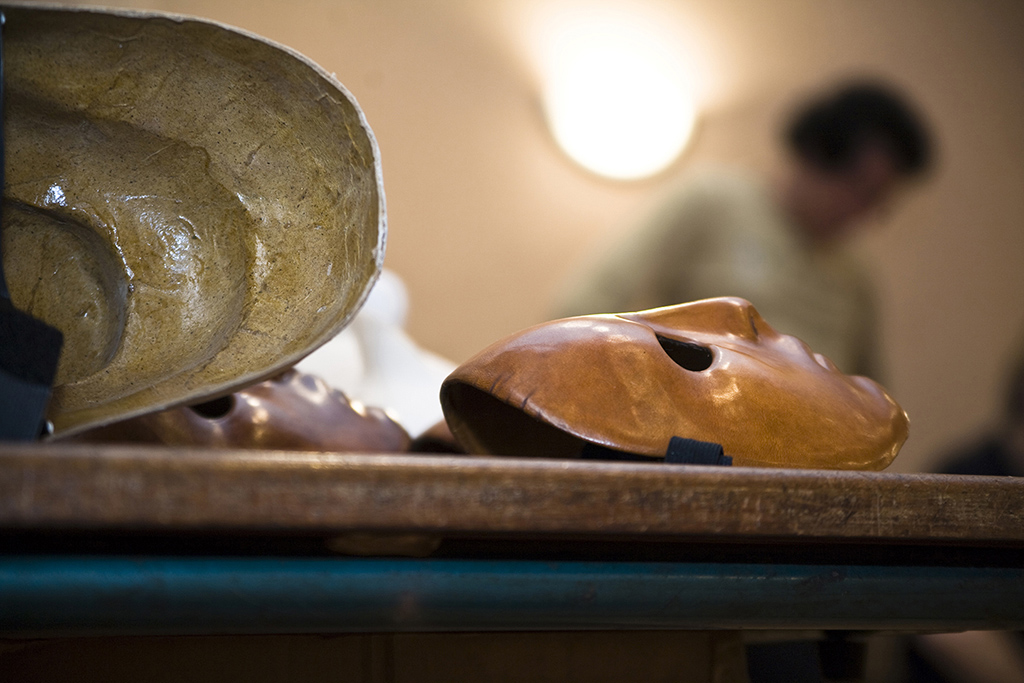A few words about the Neutral Mask
Neutral or not to be
At the beginning of the last century, researchers, directors and pedagogues, artists like Jacques Copeau, Jean Dasté, Charles Dullin and Louis Jouvet, were interested in the use of the mask, both in learning and in a creative process or on stage.

a generic character without internal conflict
 The neutral mask is a learning mask, which is not designed to be used on stage. Unlike expressive masks, the neutral mask does not express a specific character. He represents a generic character, without internal conflict, but able to express all the diversity of our emotions.
The neutral mask is a learning mask, which is not designed to be used on stage. Unlike expressive masks, the neutral mask does not express a specific character. He represents a generic character, without internal conflict, but able to express all the diversity of our emotions.
The wearing of a mask, whether neutral or expressive, requires the actor to enlarge his play, the expressions of the face passing through the whole body. By masking the face, the body becomes more readable. It is in this spirit that I use the neutral mask in my trainings to help the actor to focus, to find a state of listening, availability of play, to express his feelings accurately.
Thus appear the first so-called neutral masks. Étienne Decroux covers the face with a tissue and develops a body grammar, based on the articulation of the body. Jacques Lecoq designs with the Italian sculptor Amleto Sartori whole masks representing a face without apparent conflicting expressions. These leather masks, will become the essential reference of the work of the neutral mask in the formation of the actor.
 More recently, Mario Gonzalez is developing a pedagogical system for which he uses a new form of neutral masks, the empty masks, which he designs with the masks creator Étienne Champion. Today the association « The Creators of Masks » wonders about the plastic neutrality of the mask object, about the possibility of other aesthetics than that forged by A. Sartori.
More recently, Mario Gonzalez is developing a pedagogical system for which he uses a new form of neutral masks, the empty masks, which he designs with the masks creator Étienne Champion. Today the association « The Creators of Masks » wonders about the plastic neutrality of the mask object, about the possibility of other aesthetics than that forged by A. Sartori.
The neutral mask guides the actor towards the search for an expression that goes beyond the anecdote. That is to say that gestures and movements must be motivated by a specific intention and felt. Its use enhances gestures, posture, behavior, in response to the environment and to others. The learning of the neutral mask confronts the actors with the relationship between what we think we are expressing and what is perceived by others, comparing attitudes, gestures and universal behaviors to those influenced by each person's culture.